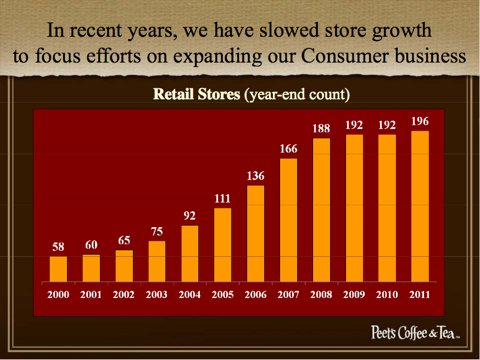2016 Beverage trend vegetable protein near water drink instant coffee hot
A cool autumn rain, the 2015 peak beverage season was so taken away by several autumn rains. This summer, due to the change of consumer concept, Wa, Kang Shifu and the beverage giants headed by Unification all showed a trend of powerless development. The whole beverage industry presents a phenomenon of unprecedented confusion and no way forward. As a result, in 2015, beverage giants worked hard to explore for future development, and the competition was particularly fierce. From the exploration made by the beverage giants, it is not difficult to find that several categories that may be popular in the beverage industry in the future have emerged. So what are the beverage categories that could be hot throughout the peak season in 2016?
one
Plant proteins
The hygienic Standard of Plant protein Beverage describes plant protein beverage as follows: a milky beverage made from plant nuts, pulp and soybeans (such as soybeans, peanuts, almonds, walnuts, coconuts, etc.) after processing and blending, and then sterilized or aseptically packaged.
Six walnuts have created a precedent in the domestic vegetable protein beverage market. Data show that Hebei Yangyuan's sales grew by more than 100% in 2013, and sales during the college entrance examination season accounted for a large proportion of annual sales. With such eye-catching achievements, compared with the declining performance of carbonated drinks and tea drinks year by year, the major beverage giants seem to see the future of the beverage industry. The entry of the southern black sesame "black milk" announced that after almonds and walnuts, black sesame drinks represented by black sesame filled the gap, and the competition of plant protein beverages tended to be white-hot.

The space of plant protein beverage is very vast. At present, except for walnut milk with six walnuts and almond milk with dew, other raw materials have not been developed, and there are many potential candidates for popular styles. Coca-Cola bought Xiamen coarse Grain King for US $400 million, and Mengniu launched the Plant Park Mill, and there are many enterprises that are optimistic about plant protein drinks.
two
Near-water drinks
Near-water beverage is not a specific beverage name, but a general term for a kind of beverage in the beverage industry. the formula of this kind of beverage is almost based on moisture, vitamins and trace minerals, and its color is almost translucent and tastier than water. unlike carbonated drinks and tea drinks, they are collectively referred to as "light drinks" or "near-water drinks".
There is no doubt that near-water drinks are sweeping the entire beverage market this summer. Uni-Haiyan, Pepsi Power, Kang Shifu Haijing Lemon, Wa C Drive, Danone Pulse and other near-water drinks firmly defend a position for their respective parent companies in the shaky beverage market.

As the mainstay of the beverage market this year, the potential of near-water drinks will not stop here, and the near-water drinks that will be more mature next year should become another major category in the beverage industry.
three
Instant coffee
As one of the three largest beverages in the world, coffee as a drink has a long history in the market, but its potential is still not to be underestimated.
In February 2014, Coca-Cola spent 1.25 billion yuan to buy China's Green Mountain Coffee; in September, it launched its first espresso drink, Qiaoya, and Coca-Cola officially entered China's ready-to-drink coffee.
In March 2015, instant noodle giant Shifu Kang also teamed up with Starbucks to launch "Frappuccino" instant coffee in mainland China.
In May 2015, China Resources Yibao announced that it would comb the two brands of coffee drinks, FIRE Hot Coffee and functional Beverage Magic, and increase the construction of market channels and terminals.
In July 2015, Uni-President's ready-to-drink coffee brand Yaha launched a new series of "hey" products, which is another addition to the ready-to-drink coffee business after the recent launch of the high-end ready-to-drink coffee brand "Lando".
In September 2015, Amazon also targeted the Chinese coffee market, opening online cafes (online cafes to provide consumers with an one-stop shopping experience for coffee tasting and production.) .

Although the growth rate of domestic instant coffee has dropped from double digits to single digits, in sharp contrast, the entire Chinese coffee consumption market is in a period of rapid growth.
According to Xinmin Weekly, global coffee bean sales are currently more than 8 million tons per year and are growing at an annual rate of 2%. China accounts for about 1x20 of the market sales. In 2014, China's coffee consumption reached more than 500000 tons, the market retail sales were close to 60 billion yuan, and China's coffee consumption increased by 15% per cent per year. Although China currently consumes 5 cups of coffee per capita, Japan and South Korea, which are also in East Asia, consume about 300 cups a year, while the world average is about 240 cups. At the same time, the huge population base makes China the most potential coffee consumer in the world.
Source: Internet
Important Notice :
前街咖啡 FrontStreet Coffee has moved to new addredd:
FrontStreet Coffee Address: 315,Donghua East Road,GuangZhou
Tel:020 38364473
- Prev

Why should Starbucks bid for Biz Coffee? Analyze the things of coffee second and Big three.
The purchase of Peets Coffee Tea Coffee has recently attracted a lot of attention in the stock market, and the German company JAB will buy the company for $73.50 a share in cash. JAB has several well-known brands, including Jimmy Choo, Coty and Bally. However, after the offer was announced, Bitz Coffee shares traded above the offer of $73.50 a share.
- Next

Two-meal coffee season, ten thousand cups of coffee warms the capital, and the blue sky after haze
Original title: two-meal coffee season, ten thousand cups of coffee warms the capital, the Imperial Coffee season, organized by two-meal joint LOHAS Le Live magazine and the Colombian Embassy in China, kicked off recently, and the event will last for a month. In this coffee season, the organizers have joined more than 100 well-known cafes, large and small, and more than 10 professional coffee suppliers and coffee products manufacturers in Beijing.
Related
- Why can American refills for free? The difference between Americano and American drip pot coffee
- Being chased out of the rain in front of Starbucks?! Store: Sheltering from rain under umbrellas poses a safety hazard
- The white moonlight has changed?! Lucky launches "Big Winter Pear American"
- Hand-brewed coffee three-stage method, high-sweet and universal brewing method to share! What does the high sweet water level of hand-brewed coffee mean?
- What is the difference between raw, refined and full espresso coffee? How to extract espresso and taste good?
- A complete list of coffee bean names and their meanings! What is Yejia Shefi coffee? Where is Mantelin coffee?
- What grade does Arida Manor Kaduai coffee beans belong to? What treatment is Arida ASD slow anaerobic sun exposure?
- The milk tea cup becomes smaller?! Overlord Tea Girl launches a new "Return to Yunnan" series
- Accused of selling counterfeit and high-priced coffee beans! Well-known boutique coffee brand "Oukelao" bowed and apologized!
- How to make espresso dumplings? Can I eat coffee and glutinous rice balls together?

